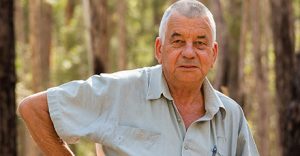 Australian Forest Products Association NSW support for the listing of northern koalas as endangered is disturbing. It is not based on science and evidence, but rather on green propaganda from taxpayer-subsidised multimillion dollar, multinational ‘charities’ such as WWF.
Australian Forest Products Association NSW support for the listing of northern koalas as endangered is disturbing. It is not based on science and evidence, but rather on green propaganda from taxpayer-subsidised multimillion dollar, multinational ‘charities’ such as WWF.
There are more koalas over a wider area, both in the north and the south, than there were when Europeans arrived in Australia. The numbers used by the Threatened Species Scientific Committee to assess their status were plucked from the air by self-proclaimed experts:
“A quantitative, scientific method for deriving estimates of koala populations and trends was possible, in the absence of empirical data on abundances.” An “elicitation specialist” helped the experts make up the numbers using “a modified version of the Delphi process”. These quotes aren’t from Monty Python, they’re from Diversity and Distributions – A Journal of Conservation Biogeography.
The listing of koalas under the EPBC Act commenced after green NGOs convinced a senate committee that there were 10 million koalas in 1788 when Europeans didn’t even know they existed. The evidence was that millions were shot after 1888. In fact, koala plagues followed European occupation as dense young forests grew in the hills and mature trees declined in the valleys. Declining trees continuously resprouted soft young shoots. Koalas irrupted in the hills, invaded the valleys and outstripped their food.
People shot starving, diseased koalas and sold their fur. But the more adults they shot, the more young survived. When leaves frizzled and trees died in the Federation Drought, koalas crashed back to natural levels. Recently some unnaturally dense populations crashed in the Millennium Drought.
In NSW north coast forests, koalas increased after intensive harvesting with chainsaws and dozers created dense young regrowth. By 1990 there were 3 times as many koalas in regrowth and plantations as in oldgrowth forests. As National Parks expanded and mild burning declined, eucalypts of all ages on all tenures began to decline and koalas irrupted.
So Dr. Law’s recent work shows that koalas are no longer concentrated in regrowth. Unfortunately he can’t see that the irruptions are caused by forest decline and go hand in hand with scrub invasion and megafires.
But koalas aren’t threatened by bushfires. Victoria’s supposedly last natural population in the Strzeleckis irrupted after our first megafire around 1820. It has survived 20 megafires in 200 years including Black Thursday 1851, Red Tuesday 1898, Black Friday 1939 and Black Saturday 2009.
Nor are they threatened by “urban expansion, feral animals, disease, and car strikes”. Natural low-density populations have Chlamydia but not chlamydiosis. Populations of foxes in the Pilliga and wild dogs on the Koala Coast increased in response to koala irruptions. It’s not suburbia moving into koala habitat, but koalas moving into suburbia that’s causing collisions with vehicles.
Koalas are currently breeding like rabbits on all the soft young growth after Black Summer.
Vic Jurskis has worked for NSW Forestry Commission and was an active member of bushfire brigades before being transferred to Eden as Officer in Charge of the Forestry Commission’s Regional Research Centre.
From 1997 until 2002, he was employed as the Forestry Commission’s Regional Planning Manager before being appointed as Silviculturist for the Commission’s Native Forest Division.
In 2004, he was awarded a Fellowship by the Joseph William Gottstein Memorial Trust and in 2006, received an award from Australian Academy of Science. He has published many papers in scientific journals, presented papers as a representative of NSW Forestry Commission and has given independent evidence at three parliamentary inquiries into land and fire management. Since retiring from the Forestry Commission in 2012, he has written his first book Firesick Ecology published in 2015.





